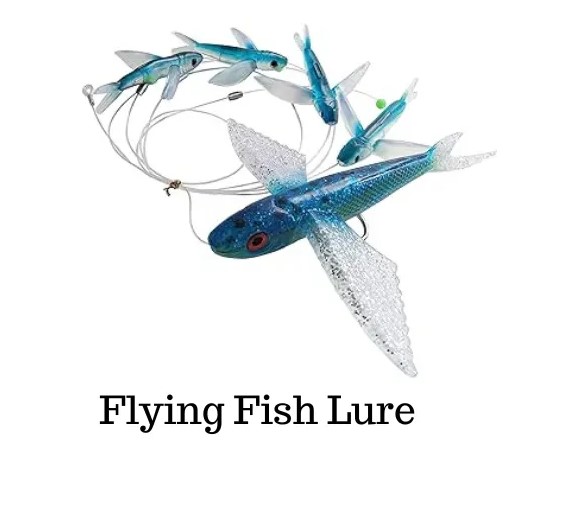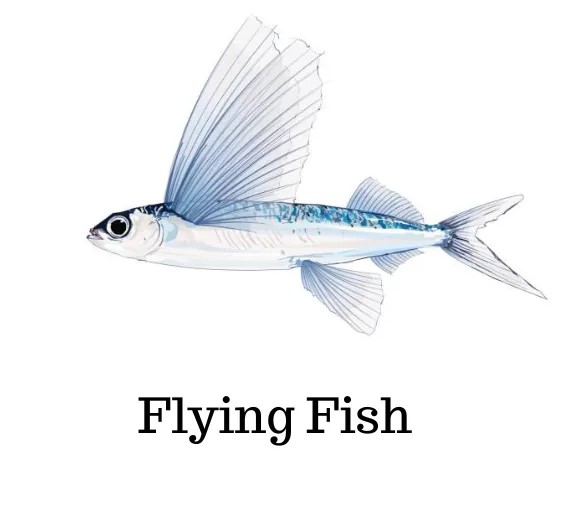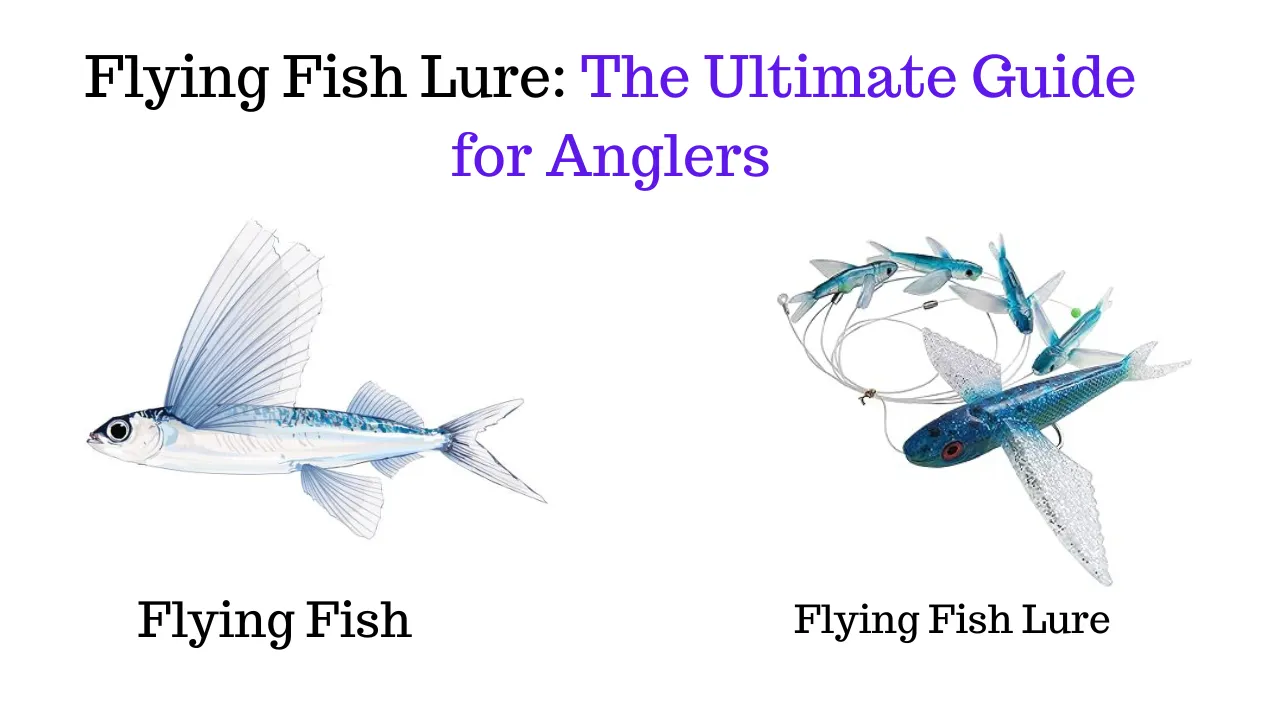Introduction
Are you looking to up your fishing game to next level ? Well, let’s talk about flying fish lures. These Lures can make a huge difference in your success rate. But what exactly is a flying fish lure, and why are they so important ? Let’s dive in and explore everything you need to know about these crazy fishing lures.

History of Flying Fish Lures
The story of flying fish lure is very interesting. Many years ago when anglers observed how real flying fish is attracting predators. So By mimicking the look and movement of these flying fish, early lure makers crafted their first prototyppes (Sample). Over the period of time, these lures got upgraded with better materials and designs, gaining popularity among anglers worldwide.
Types of Flying Fish Lures
| Type | Description |
|---|---|
| Hard Plastic | These are Durable and withstands aggressive strikes of predators. |
| Soft Plastic | Lifelike texture, appeals to predators. |
| Hybrid | Combination of hard and soft elements for versatility. |
How Flying Fish Lures Work
Flying fish lures are designed and made in such a way that they exactly look like real flying fish and even action also matches with the real one. Their unique design often includes wings or fins that create an enticing action in the water. This motion, combined with vibrant colors and reflective surfaces, makes them irresistible to predatory fish.
Choosing the Right Flying Fish Lure
| Factor | Description |
|---|---|
| Water Conditions | Clear, murky, cold, warm |
| Target Species | Bass, trout, tuna, mackerel |
| Personal Preference | Size, color, brand |
Best fishing brands like Rapala, Yo-Zuri, and Shimano make this kind of fishing lure and they really look after the effectiveness and durability.
When to Use Flying Fish Lures
Flying fish lures are particularly effective in specific conditions. These lures are very productive during early morning and late eveninig, around sun rise and sunset as they shine during the early morning and late evening . Seasonal changes also plays important role as they are very effective during the spring and summer months due to good activity of fishes on the surface.
Techniques for Using Flying Fish Lures
| Technique | Description |
|---|---|
| Casting | Aim for high activity areas, smooth controlled cast. |
| Retrieving | Vary speed to mimic erratic movement of a real flying fish. |
| Jigging | Use vertical motion for enticing flutter in deeper waters. |
Tips for Success with Flying Fish Lures
| Tip | Explanation |
|---|---|
| Matching the Hatch | Choose a lure resembling local baitfish. |
| Varying Retrieval Speed | Change speed to trigger strikes from fish. |
| Using the Right Gear | Pair with appropriate rod, reel, and line. |
Benefits of Using Flying Fish Lures
| Benefit | Explanation |
|---|---|
| Versatility | Suitable for both freshwater and saltwater fishing. |
| Effectiveness | Proven to attract a wide variety of fish species. |
| Durability | Made from robust materials for repeated use. |
Flying Fish Lure Price
| Price Range | Description |
|---|---|
| $10 – $20 | Basic models, good for beginners. |
| $20 – $35 | Mid-range, suitable for most anglers. |
| $35 – $50+ | High-end, used by professional anglers, often more durable. |
Best Flying Fish Lure
| Brand | Model | Features |
|---|---|---|
| Yo-Zuri | 3D Popper | Realistic design, effective action. |
| Rapala | X-Rap Magnum | Durable, versatile, high performance. |
| Shimano | Waxwing | Innovative design, great for big fish. |
Flying Fish Trolling Lure
| Feature | Description |
|---|---|
| Designed for Trolling | Meant to be used for trolling in deep sea. |
| Surface Action | Skips on the top water surface, attracting big predators. |
| Target Species | Tuna, marlin and other large pelagic species. |

Common Mistakes to Avoid
| Mistake | Description |
|---|---|
| Overlooking Conditions | Not considering water condition (clarity), temperature, and behavior of the Fish. |
| Incorrect Lure Selection | Selecting wrong size and color for target fish. |
| Poor Technique | Improper casting and retrieval speed. |
Maintenance and Care of Flying Fish Lures
| Task | Description |
|---|---|
| Cleaning | Rinse with freshwater after each use. |
| Storage | Store in a dry place to prevent corrosion. |
| Inspection | Regularly check for damage, replace worn parts. |
DIY Flying Fish Lures
| Step | Description |
|---|---|
| Materials Needed | Plastic sheets, paint, hooks, tools. |
| Simple Design | Start with a basic design before more complex ones. |
| Step-by-Step Guide | Follow a detailed guide to ensure functionality. |
Top Spots for Using Flying Fish Lures
| Location Type | Description |
|---|---|
| Freshwater | Lakes and rivers with high predatory fish activity. |
| Saltwater | Coastal areas, near reefs and drop-offs, ideal for big game. |
Testimonials from Expert Anglers
Hear from seasoned anglers who swear by flying fish lures. They share their success stories and personal tips, highlighting how these lures have transformed their fishing experiences.
Conclusion
For any fisherman, the flying fish lures are the most productive fishing lure. For this reason, with a very natural bent and a broad use in fishing, they can greatly increase your chances of catching. Therefore, why not to try . It may scale to great heights that you might just catch the biggest fish of your life.
FAQs
Q : What are the best conditions for using flying fish lures?
Using properly shaped lures for the flying fish is effective especially when fishing at the break of dawn and during dusk because the fish are likely to be near the surface of the water feeding.
Q : Can flying fish lures be used in freshwater?
Yes, flying fish lures are very diverse and there are those that are designed for both the fresh water and the sea.
Q : How do I store my flying fish lures?
Wash them with fresh water after use, towel or wipe to remove water and ideal to be stored in cool dry area to avoid corrosion.
Q : What type of fish can I catch with flying fish lures?
It is used in catching many sorts of predatory fish such as bass, trout, tuna, mackerel and other related fishes.
Q : Are DIY flying fish lures effective?
Yes, DIY flying fish lures can be effective if made with quality materials and proper techniques.

